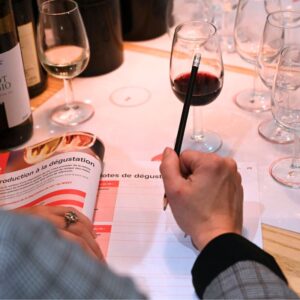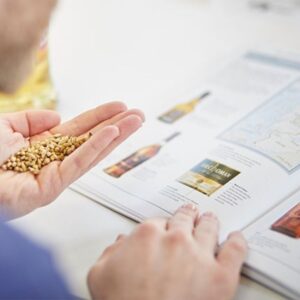“Teaching is also learning.
And after 7 years of delivering WSET courses, here are the 7 most valuable lessons I’ve learned.”
At Weeno, teaching wine, spirits, beer, or sake isn’t just about following a curriculum.
It’s a daily commitment to helping each student progress, understand—and enjoy the learning journey.
Since 2017, Vanessa Guébels, founder of Weeno, has supported hundreds of students in their WSET journey—the world-renowned qualification for wine, spirits, beer, and sake.
Over the years, she’s uncovered powerful insights about education, support, and what truly drives student success.
She’s learned what moves learners forward… and what holds them back.
📚 In this article, our founder shares 7 key lessons from 7 years of WSET teaching—insights that turn every training session into a rich, personal, and memorable experience.
Practical advice, drawn from real-life teaching, for:
- future WSET students
- passionate wine lovers still on the fence
- educators looking for fresh teaching inspiration

1. Success Starts Well Before Day One
“The best results often come from the best preparation.”
When people think of WSET training—especially Level 2 and Level 3—they usually picture the classes, the tastings, the exams.
But experience has shown me that the difference between a good student and an exceptional one often happens before the first session even begins.
At Weeno, we welcome a wide range of students: weekend wine lovers, professionals in career transitions, managers seeking credibility…
But the ones who excel the most are those who arrive mentally and methodically prepared.
WSET requires real preparation in advance:
- Level 2 (Wines or Spirits) requires around 12 hours of self-study beforehand.
- Level 3 demands at least 60 hours of reading, note-taking, memorizing—before we even open the first bottle together.
One thing is clear: these courses are not designed for you to learn everything from scratch in class.
They’re meant to deepen, clarify, and apply what you’ve already started learning on your own.
What We’re Implementing at Weeno for the Upcoming Term
Starting September, for both online and in-person sessions, we’re launching a new pre-course support system:
Pre-training emails with:
- Practice exercises and corrected answers
- Mock exams to self-assess your level
- Video tutorials led by our two senior trainers, Vanessa Guébels and Alexia Hupin
Live preparation sessions with our WSET educators, designed to:
- Answer student questions
- Remove doubts
- Build a strong foundation for the course
All sessions will be available in replay format, so even full-time professionals or international students can follow at their own pace.
Our Goal: Confident, Prepared Candidates
By reinforcing the before-the-course phase, our goal is simple:
- Help students feel autonomous and committed from the start
- Prevent learning bottlenecks mid-course
- Ensure smoother, more effective progress
Because a successful WSET course isn’t just about enjoyable tastings…
It’s about creating a full learning experience—one that starts well before, and continues long after the classroom.

👉 Looking for our top tips to pass your WSET with confidence?
Check out our article: How to Succeed at WSET
2. Repeat, Repeat… and Repeat Again!
“What makes the difference on exam day isn’t just understanding—it’s recalling the right info at the right time.”
In WSET training, some core concepts come up again and again—regardless of the course level or wine region.
These are the essential building blocks every student needs to master. Why? Because they apply across the board, in nearly every scenario.
But understanding them once isn’t enough.
What truly matters is smart repetition.
The Key Concepts We Drill (With Care!)
At Weeno, we intentionally reinforce certain topics—orally, in writing, and through tasting:
- Oak influence: new vs. old barrels, toasting level, oxygen impact, flavor profile
- Lees contact: texture, roundness, autolytic flavors
- Malolactic fermentation: acidity drop, lactic aromas, style differences
Why do we repeat these?
Because these factors shape the final style of the wine no matter where it’s made.
Whether you’re studying a Burgundy Chardonnay, a Napa Valley red, or a South African white, these techniques appear consistently.
Learning to recognize and analyze them is fundamental.
The Secret? Associative Memory
At Weeno, we vary the way we teach to create stronger mental connections:
- We explain the concepts in class lectures
- Reinforce them in written materials
- Explore them during guided tastings
- Revisit them in quizzes and case studies
This multi-layered approach helps the brain link ideas together—not just store facts.
It’s not about rote memorization. It’s about building a network of associations that turn knowledge into reflexes.
A Teaching Method Focused on Integration, Not Overload
In every course, our goal isn’t to “impress” students with technical jargon…
It’s to create simple, effective learning loops that build solid habits.
When it comes to oak, lees, or MLF, our students:
- hear it
- read it
- taste it
- live it
And suddenly, they don’t have to memorize it—it just clicks.
Because in teaching, just like in tasting…
Well-timed repetition leaves the strongest impression.

3. In the Exam, Logic Beats Perfect Memory
“Even if you don’t know the exact answer… you probably know how to figure it out.”
One of the biggest blocks WSET Level 2 or 3 students face is the fear of not remembering everything.
But here’s the truth all of our instructors repeat: you already know more than you think.
The WSET Doesn’t Test Rote Memorization—It Tests Reasoning
Let’s take an example:
You get a question about Argentina—a region you haven’t reviewed recently.
Instead of panicking, use the core principles you’ve learned:
- What’s the climate like? → Hot and continental
- What are the natural features? → High altitude, low rainfall, intense sunlight
- What’s the food culture? → Lots of grilled meats → so bold reds are a good match
From that alone, you can logically infer:
- Likely grape varieties (Malbec, Cabernet Sauvignon, Syrah…)
- Wine styles (ripe, full-bodied, possibly oaked)
- Vineyard practices (irrigation, nighttime harvests, etc.)
WSET Teaches You to Think Like a Wine Pro
Our teaching approach is designed to train students to think like winemakers or sommeliers, not like walking encyclopedias.
WSET gives you a set of universal building blocks:
climate, soil, grape variety, winemaking techniques, local market dynamics…Once you understand those, you can analyze any wine region—even one you’re unfamiliar with.
What This Changes on Exam Day
You’re faced with an unfamiliar question?
→ Take a breath
→ Fall back on the fundamentals
→ Use logic and deductionIn 80% of cases, that will lead to a solid, well-reasoned answer—and likely a correct one.
Want to explore our WSET training options?
👉 Check out all our in-person and online sessions at weenodrinksacademy.com
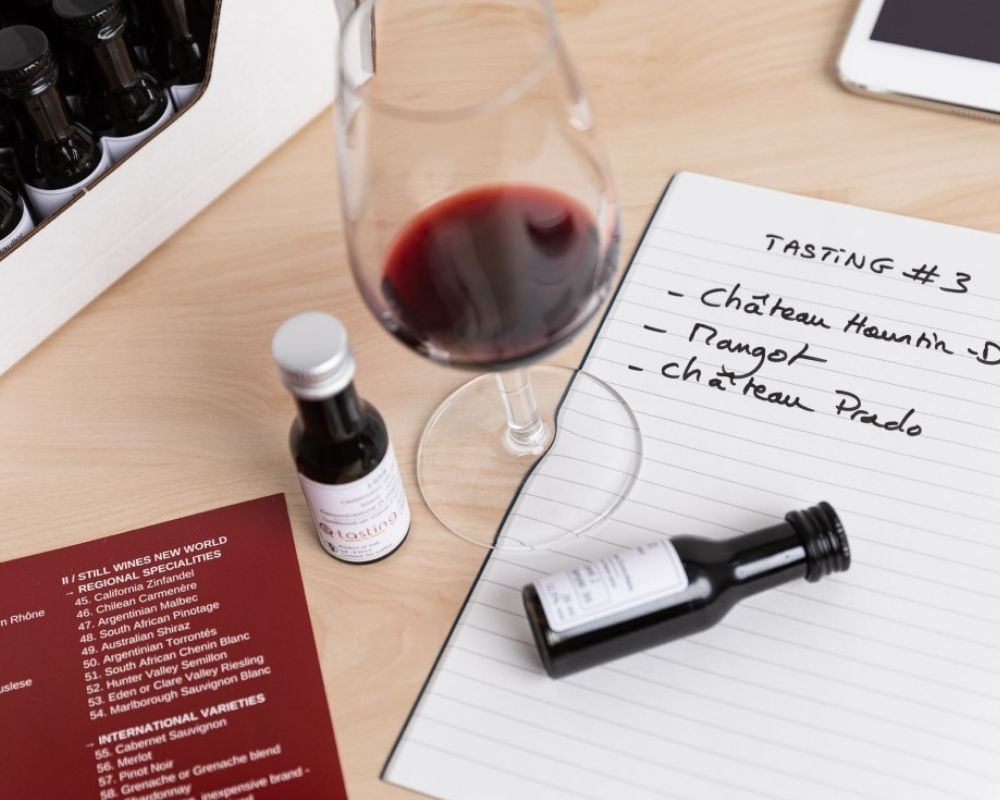
4. Taste to Learn: Every Sample Matters
“A good sample doesn’t just taste good—it teaches.”
In WSET courses, tasting isn’t just a pleasant break.
It’s a powerful learning tool—but only when the wines and spirits are carefully selected.
At Weeno, every product we pour is chosen with strict educational criteria in mind.
For Wine: Quality, Precision, and a Sense of Place
We prioritize:
- Organic or biodynamic wines that express their terroir more faithfully
- Internally validated bottles, ensuring they’re representative of style and origin
- Clear, textbook examples that illustrate appellations, grape varieties, or quality levels
Why?
Because a great sample helps students retain key concepts, sharpen their palate, and connect theory to reality.
A student who tastes a true Mosel Riesling—dry, crisp, and mineral—will never forget what a great German Riesling is supposed to be.
For Spirits: Compare, Contrast, Understand
Here too, the selection is anything but random.
We often present:
- Mainstream brands, with clean and accessible flavor profiles
- Alongside craft or small-batch products, often more expressive and nuanced
This is especially striking in:
- American whiskeys, where the mash bill (corn, rye, barley) completely changes the aroma and texture
- Gin, rum, and flavored liqueurs, where ingredients and techniques can amplify—or mask—the base spirit
And we go beyond the label, offering context on:
- Production methods
- Ingredients
- Applications in mixology (cocktails, food pairing, etc.)
Why It Matters
Because sensory memory is a cornerstone of wine and spirit education.
At Weeno, each tasting is a building block of lasting knowledge—carefully selected to leave a strong impression on the brain, the palate… and your final exam score.
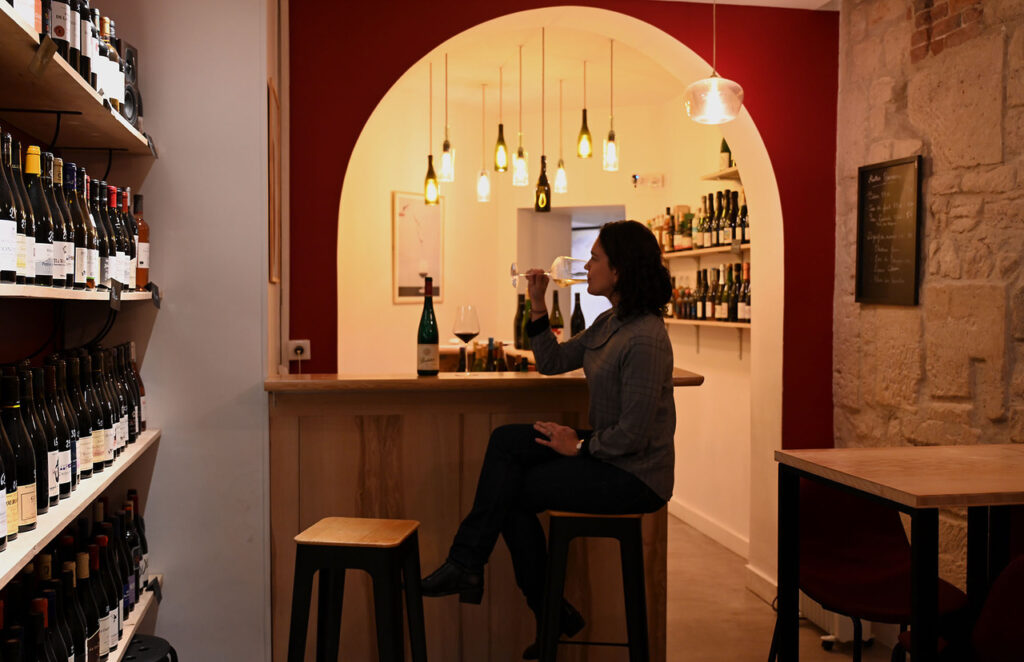
5. Training the Trainers: Ensuring Excellence Everywhere, Every Time
“Teaching is sharing. Training teachers is multiplying impact.”
In 2018, Weeno began with two passionate educators.
But since the opening of our Paris school in 2022, we’ve grown—without ever compromising on quality.
Today, more than 6 certified instructors deliver WSET courses at Weeno, both in-person and online.
And we’ve built a structured teaching framework to guarantee a high level of expertise—no matter the format or the instructor.
Up-to-Date Resources, Shared Teaching Practices
Each Weeno trainer:
- Receives the latest WSET teaching materials (wine, spirits, beer, sake)
- Attends regular briefings to ensure session-to-session consistency
- Has access to support materials to master our tools (platforms, kits, assessment sheets, etc.)
Our motto?
Clarity, rigor, and coherence in every aspect of teaching.
Audits and Regular Feedback Loops
Every year, we conduct:
- Teaching audits (online or in-person) to evaluate pacing, clarity, and student engagement
- One-on-one feedback sessions, both supportive and constructive
- Content refreshers on complex or evolving topics
Human Support in All Situations
Teaching also means managing group dynamics.
And sometimes, certain students challenge the classroom environment: overly anxious, constantly interrupting, or creating tension.
That’s why our instructors are trained to handle these situations calmly, professionally, and fairly.
They’re also fully briefed on:
- Our internal procedures and admin workflows
- CPF rules and funding logistics
- Certification protocols and learner pathways
And most importantly:
They’re never left to handle it alone—we support them every step of the way.
What This Means for Our Students
- A seamless, consistent learning experience—no matter who the trainer is
- No guesswork, no vague explanations
Just solid expertise, proven pedagogy, and a passion that shines through

6. Keeping the CPF Option Alive: Our Winning Bet to Preserve WSET Quality
“Make the WSET accessible—without compromising its content.”
In late 2021, a major reform disrupted training in France.
Despite being internationally recognized, WSET programs were excluded from CPF funding.
A baffling decision that impacted many schools and students.
Two Options… and Our Bold Choice
At that point, training providers had two choices:
- Create a custom “certified” program, loosely inspired by WSET, to remain CPF-eligible
- Stick to the official WSET content, and find a creative way to keep it fundable
At Weeno, we chose option 2—because our students deserve the real WSET.
A Smart Solution: WSET Training + Certified Business English
Here’s how it works:
We bundle the WSET course with a certified English language training pathway.
In practice, that means:
- Courses delivered in English or bilingual (English/French) formats, depending on participant levels
- Prep for recognized English certifications like CLOE (by the French Chambers of Commerce) or LTE(LanguageCert Test of English)
- CPF funding secured under the language training category—even though the student is also learning about wine or spirits
What Students Get Out of It
- Full access to official WSET training
- CPF funding, despite the reform
- A recognized business English certification to add to their CV
- Improved international skills—a must in the global wine & spirits industry
It’s a win-win:
Students receive two valuable certifications and never have to sacrifice content quality.
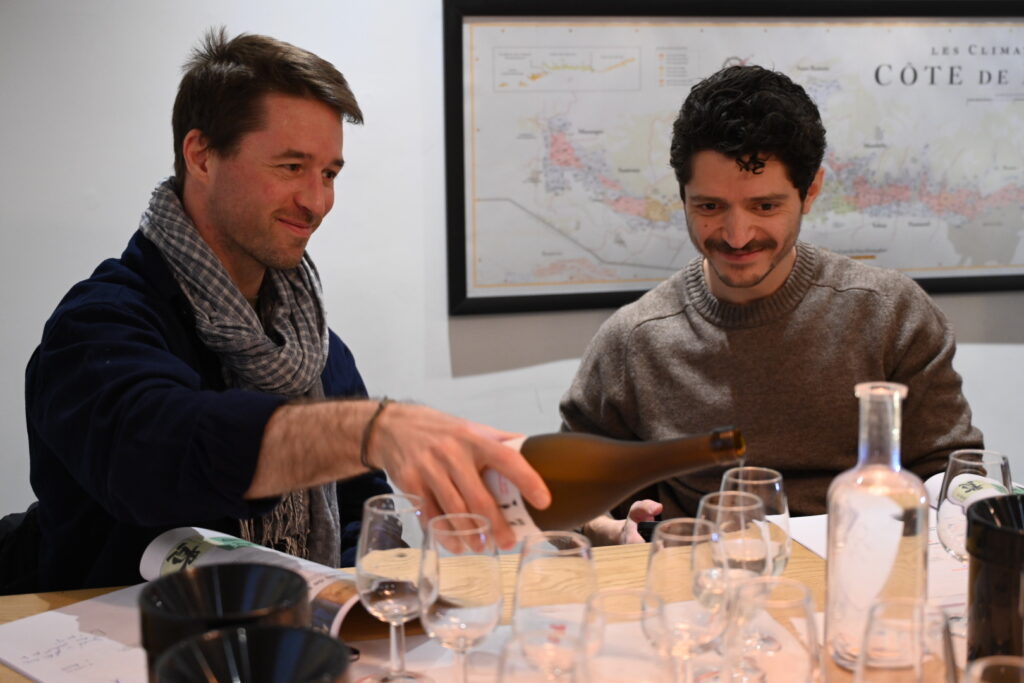
7. Learn, Succeed… but Most of All, Enjoy the Journey
“We remember best what we love. And we learn better when we’re having fun.”
At Weeno, success isn’t measured solely by exam results
(even though we’re proud of our 98% pass rate for WSET Level 2 Wines and 78% theory / 98% tasting success for Level 3).
What really matters is seeing our students:
- gain confidence,
- enjoy the learning process,
and leave the classroom hungry for more knowledge.
Consistent and Tangible Feedback
We keep a close eye on satisfaction ratings, whether through:
- official CPF quality audits, or
- spontaneous reviews on Google (5/5 average rating)
These scores reflect a deeper truth:
People don’t come to Weeno just for a diploma—they come for an experience.
The WSET as a Starting Point, Not a Finish Line
For many, the WSET marks the beginning of a new relationship with wine, spirits, beer, or sake.
After completing the course, our students:
- feel empowered to make smarter choices at wine shops and restaurants
- travel differently—with their palate as their compass
- strike up fascinating conversations with fellow enthusiasts or industry pros
and most of all, take greater pleasure in every tasting
What We Aim to Offer Every Learner
- A clear and structured learning framework
- A supportive, caring team
- A rigorous but passionate curriculum
- And the joy of learning something truly valuable—for life
Because taste is more than just flavor—it’s a culture, a language, and a connection between people.

Teaching WSET: A Human Adventure that Opens Doors
After 7 years of teaching WSET, what we’ve learned goes far beyond curriculum design.
Teaching WSET is about:
- passing on precise, technical knowledge
- helping students make sense of what once felt abstract
- but above all, building confidence, nurturing curiosity, and deepening the love of taste
And that’s exactly what we strive for every day at Weeno:
putting rigor in service of pleasure, and empowering every enthusiast to take ownership of their tasting journey.
Wine, spirits, beer, and sake are rich, complex, and endlessly fascinating worlds.
The WSET is just the beginning—
a gateway to a culture, a shared language, and a deeper kind of joy.
At Weeno, we’re still learning every day—thanks to our students, our trainers, our missteps and our milestones.
👉 Browse our upcoming WSET courses at weenodrinksacademy.com
Or follow us on Instagram @weeno_drinks_academy
for daily tips, behind-the-scenes content, and inspiration from the world of wine & spirits.

